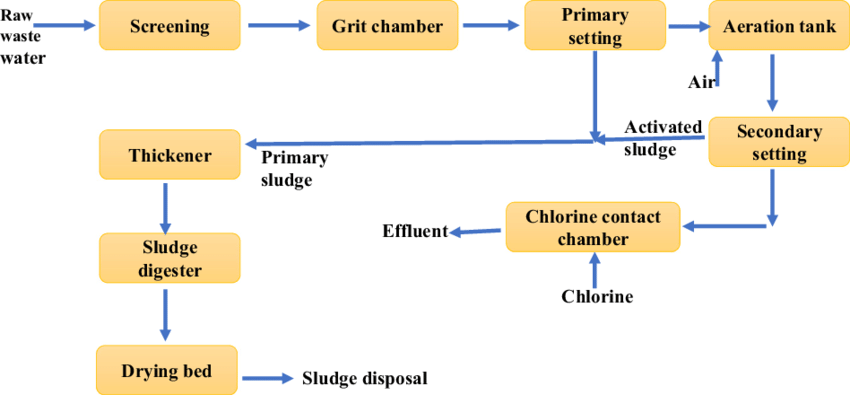Reclaim Waste - An Overview
Wiki Article
Top Guidelines Of Reclaim Waste
Table of Contents9 Simple Techniques For Reclaim WasteAn Unbiased View of Reclaim WasteExcitement About Reclaim WasteThe Definitive Guide to Reclaim WasteThe 3-Minute Rule for Reclaim Waste
Residential sewage waste refers to the waste and items from a household septic storage tank. The proper administration and disposal of residential sewage waste call for liquid waste to be moved to a sewage treatment plant where the appropriate methods and devices are used to cleanse and dispose of waste.
Business waste typically consists of potential dangers, such as flammable materials or a combination of liquid and solid waste items, and requires an advanced and in-depth disposal procedure. The disposal of commercial waste normally entails the filtering of waste prior to transport to ensure risk-free and appropriate disposal. Industrial waste is produced from by-products and overflow of commercial processes and production.
This type of waste can not make use of the very same sewer management transportation or processes as septic or industrial fluids. The commercial waste monitoring procedure requires the evaluation and screening of fluid waste prior to it undertakes the disposal procedure (liquid waste removal). Overflow waste is the liquid waste that comes from runoff and excess stormwater in extremely inhabited areas or cities
Overflow waste can cause contamination and flooding if not handled correctly. Ensuring correct waste monitoring can stop catastrophes and minimize environmental harm.
6 Easy Facts About Reclaim Waste Shown
Contact PROS Services today to find out about our waste monitoring and disposal services and the proper methods to care for the liquid waste you generate.(https://www.openlearning.com/u/leonaube-smse1x/about/)Do you understand what happens to your water when you disengage, purge the toilet or drain pipes the cleaning device? No? Well, it deserves understanding. This supposed 'wastewater' is not just an important resource however, after treatment, will be launched to our land, rivers or the ocean. Utilized water from toilets, showers, bathrooms, kitchen area sinks, washings and commercial procedures is called wastewater.

water made use of to cool equipment or clean plant and tools). Stormwater, a form of wastewater, is drainage that flows from farming and urban locations such as roofs, parks, yards, roadways, paths and rain gutters into stormwater drains, after rainfall. Stormwater flows unattended directly to neighborhood creeks or rivers, eventually getting to the sea.
Not known Details About Reclaim Waste
In Queensland, a lot of wastewater is dealt with at sewer therapy plants. Wastewater is moved from domestic or industrial sites with a system of drains and pump terminals, referred to as sewage reticulation, to a sewer therapy plant. Neighborhood federal governments build, maintain and operate most sewer therapy plants. Operators are accredited under the Environmental Management Act 1994 to discharge cured wastewater at an appropriate ecological criterion right into rivers.The Department of Natural Resources encourages regional governments regarding managing, operating and maintaining sewage systems and therapy plants. In unsewered areas, city governments may require owners to mount private or household sewage therapy systems to treat residential wastewater from commodes, cooking areas, bathrooms and laundries. The Division of Natural Resources authorizes the usage of home systems when they are verified to be efficient.
In some new subdivisions, therapy of some stormwater to remove clutter, sand and gravel has begun using gross contaminant traps. Wastewater therapy takes place in 4 stages: Removes solid matter.
Uses small living microorganisms understands as micro-organisms to damage down and get rid of staying liquified wastes and great particles. Micro-organisms and wastes are integrated in the sludge.
6 Easy Facts About Reclaim Waste Explained
Nutrient elimination is not available at all sewage treatment plants because it requires expensive specialized devices. It is ending up being extra usual in Queensland. Clear fluid effluent generated after therapy might still consist of disease-causing micro-organisms. If this effluent is launched into waterways such as rivers or the sea, the micro-organisms will ultimately die out.
This generally suggests wastewater needs to be treated or contaminants gotten rid of prior to it can be discharged to rivers. A lot of wastewater streams into the sewage system. Under the Act, regional governments administer authorizations and licences for ecologically pertinent tasks (Periods) involving wastewater releases that might have a neighborhood influence. The department administers authorizations and licences to Periods including wastewater releases that may have a regional or statewide influence.
9 Simple Techniques For Reclaim Waste
Tracking supplies valid details regarding water top quality and can confirm that licence conditions are being met. The info acquired with tracking gives the basis for making water top quality decisions.Report this wiki page